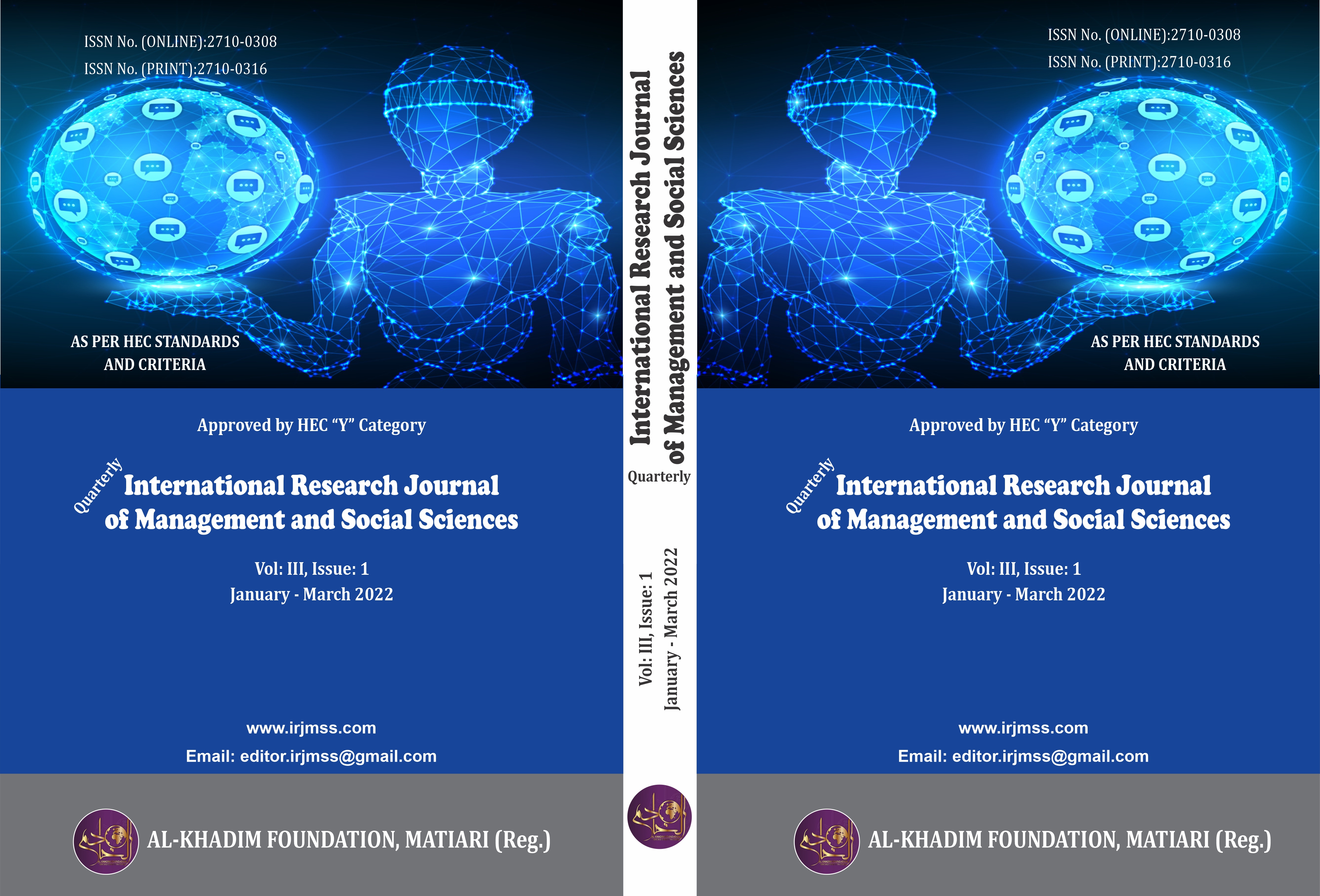Exploring The Implementation of Freedom of Expression Rights and The Use of Corporal Punishment in Pakistani Madrasas
Keywords:
Freedom of speech, Child rights, corporal punishmentAbstract
A country's long-term success depends on educating its citizens. Madrassas are Islamic educational institutes in Pakistan. The media's coverage of Pakistani madrasas' violations of children's rights, particularly in the areas of freedom of expression and corporal punishment, is contentious. Punishment that is based on bodily suffering is known as corporal punishment. The goal of this research was to establish how Pakistani madrasas implement their students' rights to freedom of speech and to avoid corporal punishment. This qualitative study explored the phenomenon of madrasa education in depth with regard to freedom of expression and corporal punishment. The population of this study includes all students and teachers in the Madrasa education system. A purposive sampling technique was used to pick eight students and eight teachers from madrasas in Rawalpindi, Pakistan. Semi-structured interviews were used to obtain data that was collected by hand. The direct quotation method was used to analyse the data. According to the findings, the majority of madrasas allow for the free expression of pupils. The data indicated that, although the Madrasa's administration listens to and appropriately addresses student complaints about teachers, the vast majority of students do not complain about teachers. In Madrasa, it is discovered that misbehaving pupils are counselled, motivated, and finally punished. It was revealed that teachers feel that madrasas can tolerate discipline because the dread of punishment encourages students to achieve their best in the classroom. The conclusion may be drawn that some students, particularly in pre-courses, are unable to openly express their concerns, while others, with the help of friends and the guidance of teachers, are able to overcome their reluctance.
https://doi.org/10.5281/zenodo.10286129
References
Abu-Nimer, M., & Kadayifci, A. (2011). Human rights and building peace: the case of Pakistani madrasas. The International Journal of Human Rights, 15(7), 1136-1159.
Abu-Nimer, M., & Kadayifci, A. (2011). Human rights and building peace: the case of Pakistani madrasas. The International Journal of Human Rights, 15(7), 1136-1159.
Alaghmand, S., Salehi, S., & Mozaffar, F. (2017). A Comparative Study of Architecture and Content of Iran’s Schools, from the Traditional Era to the Modern Era. The Scienfific Journal of Bagh–E Nazar, 14, 49.
Bassem, W. (2015). Iraqi teachers resort to abuse students. Retrieved from http :// www.al-monitor. com/pulse/originals /2015/04/ Iraqschools-teachers-violence-students-beating-video.html
Bradley, T., & Saigol, R. (2012). Religious values and beliefs and education for women in Pakistan. Development in Practice, 22(5-6), 675-688.
Butt, T. M. (2020). Social and political role of madrassa: Perspectives of religious leaders in Pakistan. South Asian Studies, 27(2).
Daily Times (2019). 11-year-old boy tied to bedstead and tortured ruthlessly by madrassa teacher. Retrieved 25 October 2019, from https://dailytimes.com.pk/484738/11-year-old-boy-tied-to-bedstead-and-tortured-ruthlessly-by-madrassa-teacher/
Gershoff, E. T. (2017). School corporal punishment in global perspective: prevalence, outcomes, and efforts at intervention. Psychology, health & medicine, 22(sup1), 224-239.
Guest, G., Bunce, A., & Johnson, L. (2006). How many interviews are enough? An experiment with data saturation and variability. Field methods, 18(1), 59-82.
Iqbal.S., Khanam.A., & Dogar.A.H. (2017). A comparative study of moral development of students from Private Schools and Deeni Madrassa: Journal of Research and Reflections in Education December 2017, Vol., No.2, pp 113-123http://www.ue.edu.pk/jrre
Orosz, J. (1997). Designing qualitative research. Public Administration Review, 57(6), 543-550.
Peletz, M. G., & Nagata, J. (2003). Islamic modern: Religious courts and cultural politics in Malaysia. Pacific Affairs, 76(3), 494.
Qamar, A. H. (2015). Being a child in rural Pakistan. The Delhi University Journal of the Humanities and the Social Sciences, 2, 100-111.
Redford, S. (2015). Intercession and Succession, Enlightenment and Reflection: The Inscriptional Program of the Karatay Madrasa, Konya.
Shah, S., Jafri, R. Z., Mobin, K., Mirza, R., Nanji, K., Jahangir, F., ... & Ahmed, H. (2018). Frequency and features of nocturnal enuresis in Pakistani children aged 5 to 16 years based on ICCS criteria: a multi-center cross-sectional study from Karachi, Pakistan. BMC family practice, 19(1), 1-9.
Su, D., Toure, D., Do, K., & Ramos, A. K. (2019). Assessing racial and ethnic differences in attitudes towards the use of physical discipline in parenting: A mixed-methods approach. Journal of Social Service Research, 45(4), 455-465.
UNICEF, J. M. (2016). World Bank and WHO: http://data. UNICEF. org/nutrition/malnutrition. html.
Voelkle, M. C., & Wagner, J. (2017). Analyzing personality change: From average trajectories to within-person dynamics. In Personality development across the lifespan (pp. 497-516). Academic Press.
Younus, S., Chachar, A. S., & Mian, A. (2018). Child protection in Pakistan: Legislation & implementation. Pakistan Journal of Neurological Sciences (PJNS), 13(2), 1-3.
Zaidi, M. A. (2013). Madrassa education in Pakistan. Centre for International and strategic Analysis.






